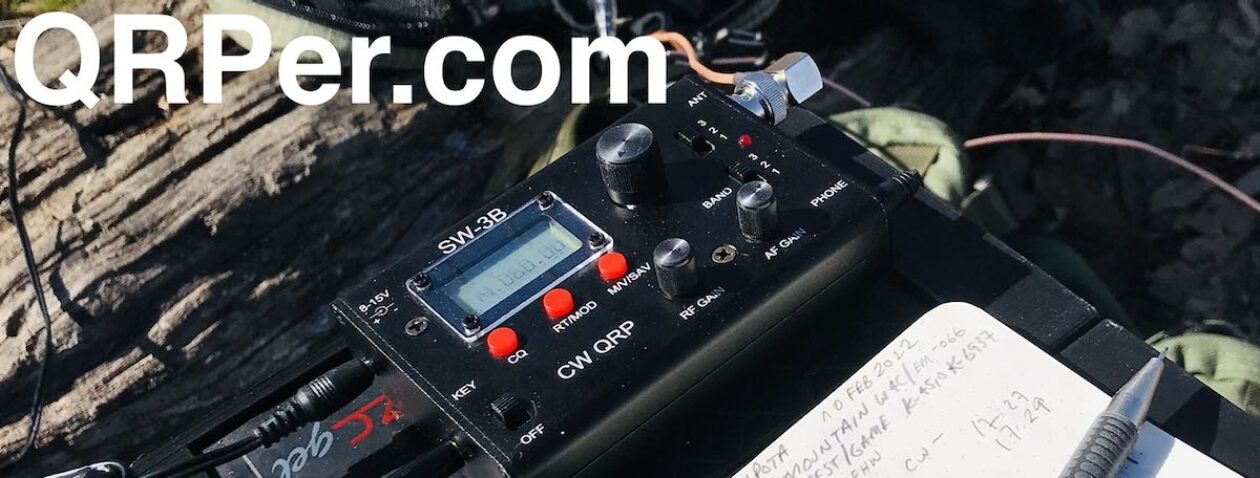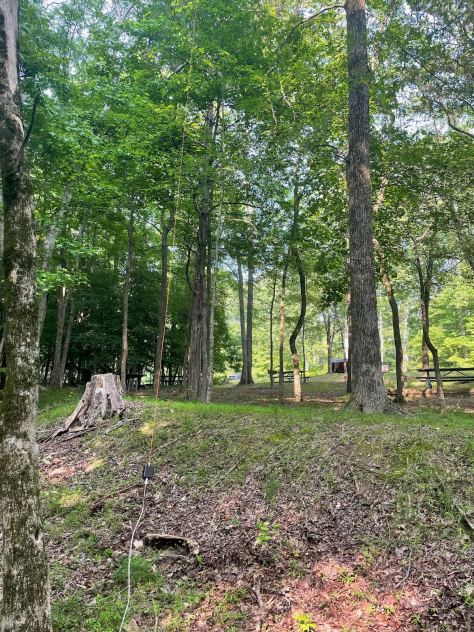I woke up around 6:45 on Saturday, August 24, 2024. That’s late for me, but I tend to sleep well when camping and it must have helped that the previous evening POTA activation by the campfire was pure bliss.
There were some noises in the campground that woke me up during the night (probably other campers scaring off raccoons), but aside from that, I slept peacefully in my rooftop tent.
As I lay there Saturday morning, I couldn’t decide whether to make breakfast and hit the air for an early morning POTA activation, or to take a nice hike before everyone else in the campground woke up.
I chose the latter option!
 At 7:00 AM, I headed to the nearby trailhead for the Lake Shore trail. It was a very pleasant and quiet hike—roughly 5 miles in total.
At 7:00 AM, I headed to the nearby trailhead for the Lake Shore trail. It was a very pleasant and quiet hike—roughly 5 miles in total.
Afterwards, I made some blueberry oatmeal and a cup of French-pressed coffee. It really hit the spot!
 Next, I grabbed my Elecraft K2 and connected it to the MM0OPX 40M EFHW that I had set up the previous evening.
Next, I grabbed my Elecraft K2 and connected it to the MM0OPX 40M EFHW that I had set up the previous evening.
I realized it had been a while since I’d taken the K2 out into the field, which was why I packed it for this trip. I use the K2 quite often in the shack, but it needed some outdoor time. All radios (and their operators!) need outdoor therapy!
New Tufteln TP-III Protective Cover
 My friend Joshua (N5FY) at Tufteln sent me this protective cover, at no cost to me, for the BamaKey TP-III. Joshua has almost become a specialist in making bespoke protective covers for radios and accessories.
My friend Joshua (N5FY) at Tufteln sent me this protective cover, at no cost to me, for the BamaKey TP-III. Joshua has almost become a specialist in making bespoke protective covers for radios and accessories.
This cover is great. You insert four rare earth magnets (included) into four holes in the bottom of the cover. These work with the rare earth magnets on the TP-III to mag-lock the cover in place.
 If you buy one of these for your TP-III, I would advice that you check the polarity of the magnets on the TP-III before inserting the magnets in the cover’s holes. I didn’t do this and found that I’d aligned a couple of the magnets in opposition, thus they repelled the magnets in the case. I had to dig the magnets out and reverse them–not a complicated procedure, but one I could have avoided had I simply thought about this in advance!
If you buy one of these for your TP-III, I would advice that you check the polarity of the magnets on the TP-III before inserting the magnets in the cover’s holes. I didn’t do this and found that I’d aligned a couple of the magnets in opposition, thus they repelled the magnets in the case. I had to dig the magnets out and reverse them–not a complicated procedure, but one I could have avoided had I simply thought about this in advance!
Anyway, I do like this cover! Thanks, Joshua!
Gear
 Note: All Amazon, CW Morse, ABR, Chelegance, eBay, and Radioddity links are affiliate links that support QRPer.com at no cost to you.
Note: All Amazon, CW Morse, ABR, Chelegance, eBay, and Radioddity links are affiliate links that support QRPer.com at no cost to you.
- Elecraft K2/10
- BamaKey TP-III
- Tufteln TP-III Magnetic Cover
- Senrog Bench Block [TP-III base]
- MM0OPX QRP EFHW (Contact Colin for Availability)
- ABR Industries 25’ RG-316 cable assembly with three in-line ferrites (Use Coupon Code ABR10QRPER for 10% Discount!)
- GoRuck GR1 USA
- Weaver arborist throw line/weight and storage bag
- GraphGear 0.9mm 1000 Automatic Drafting Pencil
- Rite In The Rain Top Spiral Notebook
- Camera: DJI OSMO 4 action camera with Joby Telepod Sport Tripod
- Thermocell Backpacker Mosquito Repeller
On The Air
 I hopped on the air and started calling CQ POTA on the 40-meter band. I figured that at this time of morning, 40 meters should be in decent shape.
I hopped on the air and started calling CQ POTA on the 40-meter band. I figured that at this time of morning, 40 meters should be in decent shape.
I was right! Continue reading Morning on the Trail and On the Air: A Relaxing K2 QRP POTA Activation from the Campsite





























































